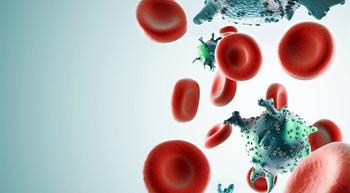
Art Therapy Helps Breast Cancer Patients Cope
Art therapy provides a creative outlet for many breast cancer patients and helps them cope with stress.
Art therapy provides a creative outlet for women with breast cancer and aids in reducing stress. Many hospitals now provide art therapy through cancer wellness centers. A trained art therapist administers art therapy sessions and a variety of art materials are made available to the people with breast cancer. The goal of the art therapy sessions is to give support, restore body image and reduce stress by giving patients sufficient time and space to reflect and express themselves. By providing a creative outlet, art therapy also allows women to learn the art of mindfulness.
The
They also say, “Art therapy is an effective treatment for people experiencing developmental, medical, educational and social or psychological impairment. Individuals who benefit from art therapy include those who have survived trauma resulting from combat, abuse and natural disaster; persons with adverse physical health conditions such as cancer, traumatic brain injury and other health disability; and persons with autism, dementia, depression and other disorders.”
A cancer diagnosis can cause a plethora of emotional turmoil in many people’s lives. Fears of pain, dying, financial distress, social changes and dependence can affect a woman’s cognitive, emotional and social functioning. The devastation and physical disabilities from breast cancer treatment like hair loss, losing a breast and weight problems can cause women to feel alienated from their own bodies. Women with breast cancer may often feel lonely and isolated. They may spend excessive amounts of time worrying, and begin to isolate themselves from loved ones. All of these feelings can lead to an overwhelming amount of stress and anxiety. Some women find it difficult to cope with all the changes a diagnosis of breast cancer brings.
Creative art therapy seems to provoke brain changes linked with decreased stress in women with breast cancer, according to a
In another
On a personal note, I began art therapy a year after my diagnosis. Classes were offered at my local hospital in the cancer wellness center. The classes were small, with no more than eight women per class. When I first began attending, I was hesitant and fearful. It was a challenge to participate in activities with strangers. I was very concerned with my body image and my self-esteem was at an all-time low. The first few weeks of classes were awkward and I almost decided to quit. Once I began to feel more comfortable with the other women and they began to share their breast cancer stories with me, I was able to look forward to attending classes. After several weeks, I found myself feeling more relaxed. I participated in art therapy sessions that included watercolor painting, mixed media, pottery and beading. As I worked on each project, I found myself focusing on the task at hand instead of focusing on my health issues. It was very freeing to be able to spend an hour or two a week being creative. I enjoyed the guidance the art therapist provided, but she never put boundaries on our creative freedom. I would highly recommend art therapy to anyone seeking help dealing with high levels of stress. Wielding a brush loaded with paint is very empowering and as the project came to life, I could feel my tensions and anxieties melting away.
Resources:
Editor's note: CURE has an online art gallery.




